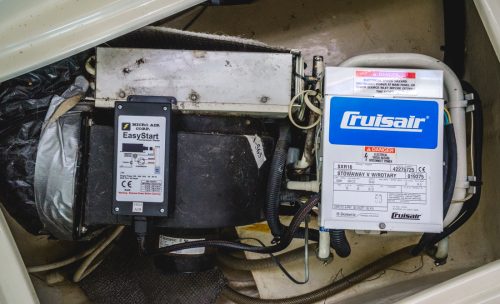Very nice summary - you covered all the main issues. My advice for anyone still interested is to consider a blended method. By that, I mean a combination of lodges, tent camping and RVing. Lodges and tent camping are easy, no brainers, so I'll focus on the RV side.
Perhaps the core, fundamental problem with RVs is that the coaches are custom built. This poses at least two problems: their own respective (lack of) quality and the fact they are then not subject to federal/state vehicle quality control standards. The solution is to get a stripped cargo van, whether it be a Transit, Sprinter or similar. This solves the problem of quality because they are unit body constructed/welded, and of course are sold under strict consumer & warranty standards. A 3rd factor would be that they are small/light enough to be serviced by either dealers or outside mechanics.
OK, so now that you have your stripped, white Transit van, what are you going to do with it? Well, you can throw your tent camping gear in it for one: sleeping bags, tent, stove, wash basin, pop up tent, chairs, bikes and what-not. That's it? No, that's not it - here's where the real beauty lies, especially if you are at all handy or like construction projects.
The first order of business is to put in a roof vent. Second is a solar panel. Third is some elementary electrical wiring - don't worry, this business has become so large (thank #vanlife) there are tons of plug & play kits available. Lacking that, there is now a very nice stable of qualified techs who do this for a living. Ok, so now you have a basic, yet very functional 12 volt solar system, complete with monitor, converter, battery (pack), etc.
Now what? Next is insulation and paneling. This is actually really easy, and you can choose/design any decor you like. Once that's finished, you have a nicely laid out interior with basic 12VDC electrical capabilities. (That is, can run LED lighting as well as USB re-charging.)
Last are the amenities, and once again there are tons of kits available, instruction videos and/or outside contractors who know how to do this. You don't want to go crazy, you don't want them hacking at metal - all you need is some kind of fold-out coach/bed, a simple counter with wash basis, and some cabinets. You can always modify via plug+play as you go. Last, get a simple marine toilet and put it in the corner of the van. Get used to going #2 in park/store/restaurant/health club toilet facilities, and keep it for mid-night #1.
So, let's review what we have: we have a super reliable, go anywhere, take anywhere stealth 'work van' that doesn't call attention to itself. If the weather is nice and the campgrounds are pleasant, you may choose to decide to set up the tent and other outdoor camping gear. If the weather is miserable, and/or you're in the mood for being indoors, spring for lodging. And when you're travelling, want to crash, there isn't availability, or you just want to chill on the side of the road overlooking a pretty vista, then you have your RV.
The name of the game is convenience, flexibility, adaptability and a worry/stress free operating vehicle that drives almost like your regular passenger car. And maybe the best part of the experience? There are lots and lots of other people doing just this - it's almost like a secret club of cognoscenti. Now, they will most likely be (much) younger, a bit liberal (that's natural) and not as financially well off, but it is a bit of a club.
And if you don't like constant travel and/or RVing and want to give it up? Total loss may be 5k, outer range $10k. No one will pay market for your upgrades, but at the end of the day, it's still a work van which has its own built in demand and market pricing structure.
Thank so much semantic. Your posts are a goldmine of information.
The first order of business is to put in a roof vent. Second is a solar panel. Third is some elementary electrical wiring - don't worry, this business has become so large (thank #vanlife) there are tons of plug & play kits available. Lacking that, there is now a very nice stable of qualified techs who do this for a living. Ok, so now you have a basic, yet very functional 12 volt solar system, complete with monitor, converter, battery (pack), etc.
I shared your entire post with my wife, and it was very intriguing. We are pretty handy (that comes with home ownership, remodeling, maintenance), and I have also done some automotive repair to include major engine work.
Let me ask you: on the roof vent, we are talking cutting the metal with an angle grinder, correct? Is the vent simply a vent with an electric motor for ventilation? If I had a camper van, I would want air conditioning, and I assume the factor air would only be sufficient for the front of the unit. Are there kits for an A/C unit for the back that would run on a Onan generator I could install? I have even heard of RVs running in lithium batteries, charged by solar power, and using a Soft Start kit.
https://www.gonewiththewynns.com/product/air-conditioning-off-grid

See the two videos associated with that link. Not sure if something like this is possible on smaller camper van.
Again, I love your idea. I can just see my wife designing the basic paneling (need to get my ShopSmith up and running).
